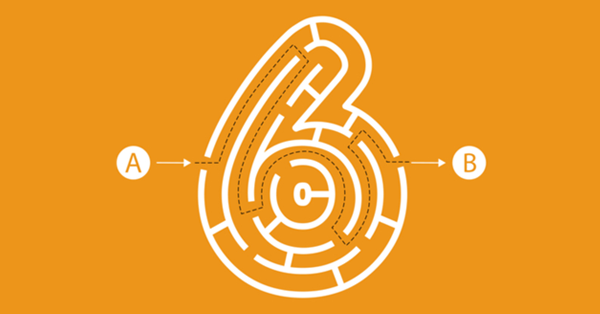Best ways to use direct mail in 2016
 Marketing blogs and trade journals create endless gigabytes of content about online marketing techniques, yet many marketers continue to rely on direct mail as a primary tactic for generating sales. In fact, several BKM Marketing clients have dramatically increased their mail volumes this year within their marketing mix because it provides them with the best return on investment compared to other less predictable channels.
Marketing blogs and trade journals create endless gigabytes of content about online marketing techniques, yet many marketers continue to rely on direct mail as a primary tactic for generating sales. In fact, several BKM Marketing clients have dramatically increased their mail volumes this year within their marketing mix because it provides them with the best return on investment compared to other less predictable channels.
Consider these facts:
What marketing channel does Google rely on to use to generate demand for Google Adwords? Direct Mail. In fact, Google consistently ranks in the top 10 of technology mailers year after year. Why? It works to create demand and can be targeted to businesses that are excellent prospects.
From the DMA Statistical Factbook (2015 Edition):
- Response rate for direct mail to an existing customer is more than 300% greater, compared to email
- Direct mail achieves a 3.7% response rate with a house list and a 1.0% response rate with a prospect list.
- Digital channels combined only achieve a 0.62% response rate: Mobile 0.2%; Email 0.1% for a Prospect list and 0.1% for House/Total list; Social media 0.1%; Paid Search 0.1% Display Advertising 0.02%. With telephone had the highest response rate at 9-10%.
- The cost-per-acquisition for direct mail is very competitive. Direct mail stands at $19, which fares favorably with Mobile and Social Media (both at $16-$18), Paid Search ($21-30), Internet Display ($41-50) and even email ($11-15).
- 82% of respondents seem to expect to use the same amount of direct mail, or more, this year.
8 Situations where direct mail works well:
- Delivering custom one-to-one offers. For example, credit card marketers seek to minimize applications from unqualified credit risks. Direct mail allows these firms to carefully target prospects who are strong prospects for their business.
- Driving traffic to a website. Ever wonder why cataloguers continue to mail so many fat catalogs? Because 60% of their web traffic comes from customers that receive them.
- Creating or stimulating demand for a product or service. BKM Marketing advocates search marketing and content marketing if your audience is already online looking for your products and services. But what if they aren’t looking? No other channel works as well as direct mail for creating highly targeted demand.
- When online clutter overwhelms your audience. Let’s face it, certain categories are simply over marketed. Email inboxes, instrusive online ads, AdWords, your Facebook feed, and even your TV becomes a haven for trying to influence your purchase behavior...and consumers are getting better at tuning out many of them. While these tactics are very effective in certain situations, they are becoming less effective and down-right annoying in others.
- When you need extra horsepower to achieve sales goals.
- Upselling the next logical purchase to a customer.
- Saying “Thank You” to your customers.
- Sales lead nurturing. Let’s say your product requires your customer to do a lot of research and has a long sales cycle. Many marketers rely on email and perhaps phone calls to nurture these leads through the sales process. Adding highly versioned direct mail to the mix can be effective for moving these prospects through the buyer's journey.
But isn’t Direct Mail less efficient than other channels?
Done poorly, direct mail can be very expensive. It always amazes us when we receive mailings from a cable TV company that can’t provide service to our building...or when mailers forget to include an offer or overspend on printing unnecessarily.
Done well, direct mail is highly efficient. So what constitutes a well-executed campaign?
- A clean, well-targeted list. The biggest strength of direct mail is the ability to truly fine-tune your list to target only your best prospects. Our best performing client mailings always stem from a streamlined, lower quantity, high quality list.
- Use a relevant offer. Direct mail sells offers that appeal to the segment of the audience you are trying to reach. And these offers need to jump out of the mail pile in order to get attention.
- Unless you are in a luxury goods market, there is no reason to overspend on printing your direct mail. There are many cost effective creative mail formats that produce the same results as more costly formats. One of our clients recently saved 33% on production and postage by using a smaller mail format with lower postage costs.
- Postage Management. If your audience is on the larger side, it’s possible to lower your postage costs dramatically using logistics to determine the lowest cost postal entry point.
Reaching potential costumers might seem easier through the use of technology via email and social media, but you must first cut through all the clutter and noise that those include. As such, there still exists a target audience that can be reached through direct mail. In fact, a survey from Target Marketing in 2012 found that that direct mail was one of the marketing methods that delivered the highest ROI for B2C companies in terms of customer acquisition. In addition, direct mail also scored the highest in customer contact and retention.
The study highlights the main challenges that clients face when employing a direct mail strategy and what is the cost associated with the pieces once they need to be printed. This of course, involves the extra effort of deploying and tracking them. But don’t let this deter you from seeing the big picture and the positive results from choosing direct mail for your next marketing strategy.
There’s something to be said about leaving your prospects with something tangible, highly visual and interactive. This tends to leave a bigger mark or footprint in the brain, which might make the difference in the results of your next marketing program.


![[6] Tips to BOOST Your Direct Marketing Response | Key Takeaways](https://www.bkmmarketing.com/hubfs/BKM-Marketing-Blog-Tips-Boost-Direct-Marketing-1.jpg)
![[6] Tips to BOOST Direct Marketing Response | #6 Sustainable Efficiencies.](https://www.bkmmarketing.com/hubfs/iStock-626262484-%20hero.jpg)


SUBMIT YOUR COMMENT